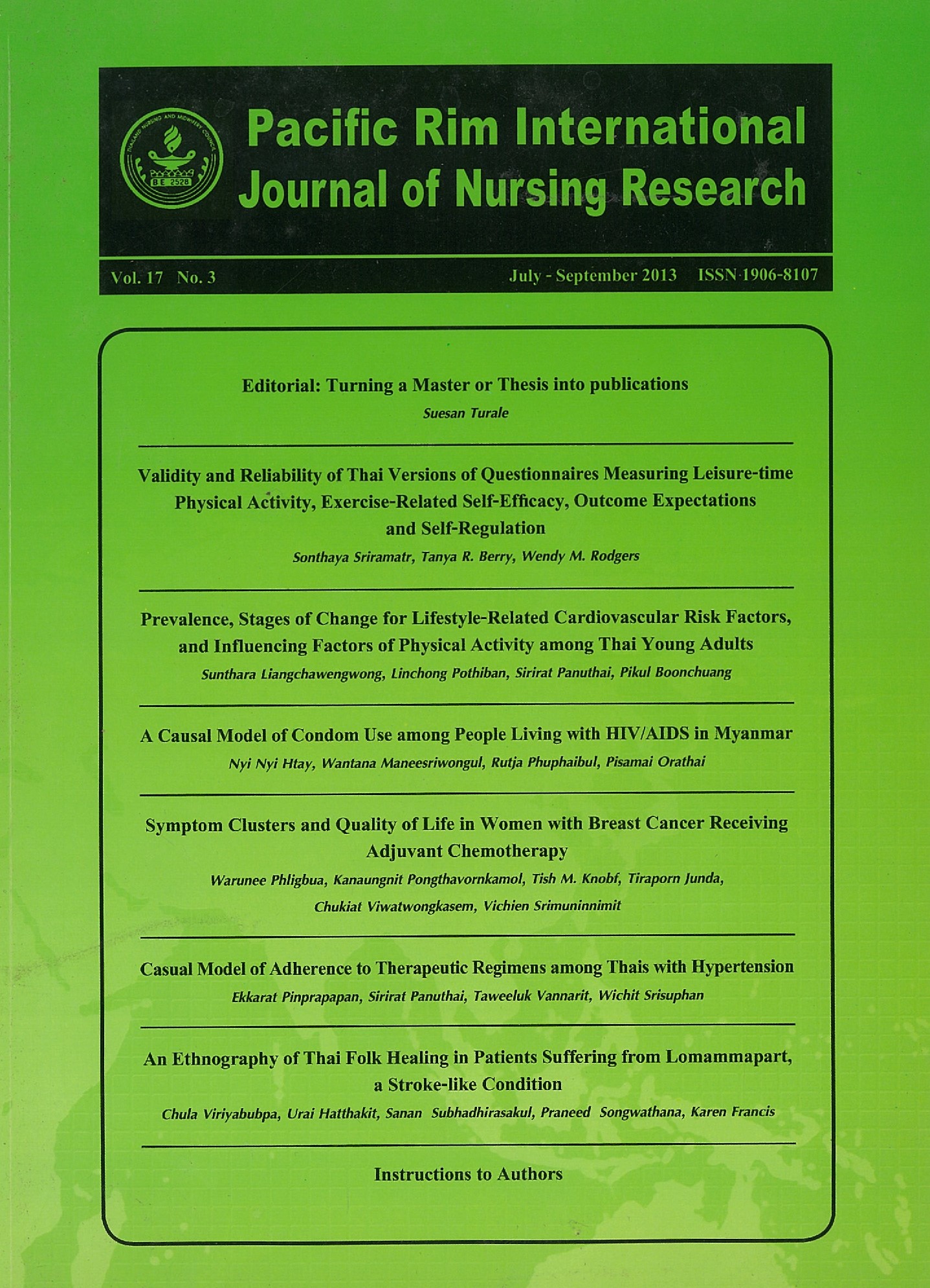Prevalence, Stages of Change for Lifestyle-Related Cardiovascular Risk Factors, and Influencing Factors of Physical Activity among Thai Young Adults
Keywords:
Stage of change, Transtheoretical Model, lifestyle, cardiovascular, risk factors, physical activity, young adultsAbstract
This descriptive correlational design aimed to investigate the prevalence and stages of change of lifestyle-related cardiovascular risk factors, test associations and the ability to predict change transition of the Transtheoretical model constructs for physical activity among Thai young adults. Multistage proportion cluster sampling method was employed to obtain 1,124 first-to fourth-year students of eight government universities
in Thailand. Data were collected by six instruments, and analyzed using descriptive statistics, Pearson χ2 – test, MANOVA, and the multinomial logistic regression. The results revealed that participants had a high prevalence of physical inactivity (81.49%), unhealthy dietary habits (58.62%), sedentary lifestyle (57.29%), alcohol consumption (41.01%), stressful lifestyle (26.78%), and cigarette smoking (9.34%). Most reported being inactive in most of all lifestyle-related cardiovascular risk factors. A similar distribution of the stages of change was apparent both genders, and the first-to fourth-year students. Stages of lifestyle-related cardiovascular risk factors change were correlated with stages of physical activity change (p<0.001). The Transtheoretical Model constructs; Self-efficacy, pros, cons, and processes of change were correlated with stages of change of physical activity. Only, cons was the highest affected of all the stages of physical activity change. These results suggest that young adults should be the prioritized group for working to prevent cardiovascular disease, especially by health-promoting nurses, and health professionals and educators.
Downloads
Published
How to Cite
Issue
Section
License
Copyright: The Pacific Rim International Journal of Nursing Research, Thailand Nursing & Midwifery Council has exclusive rights to publish, reproduce and distribute the manuscript and all contents therein.








.png)



